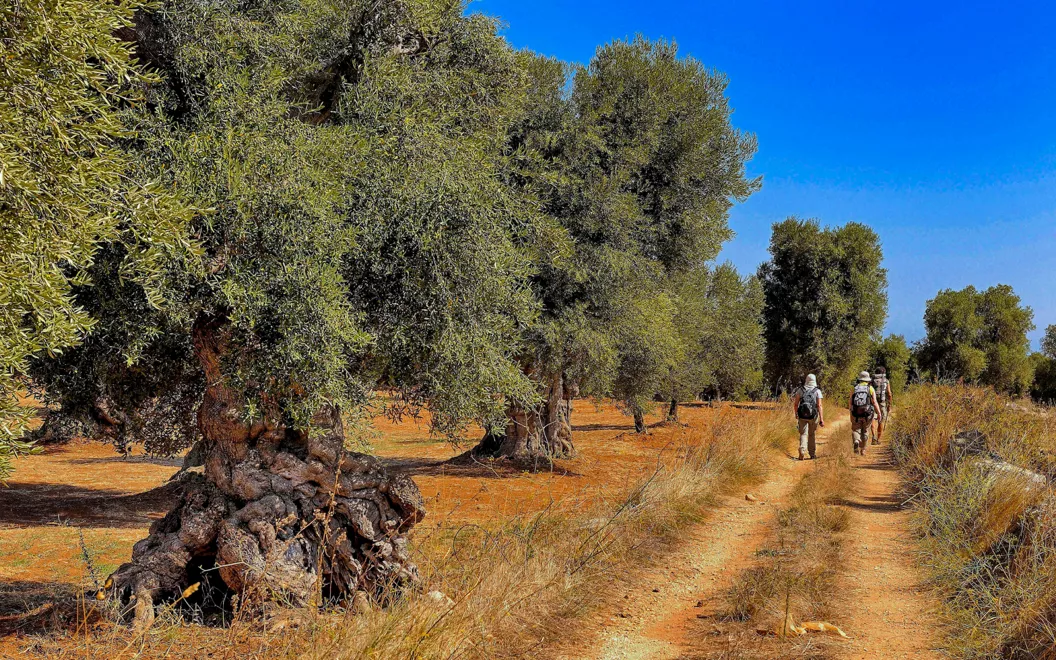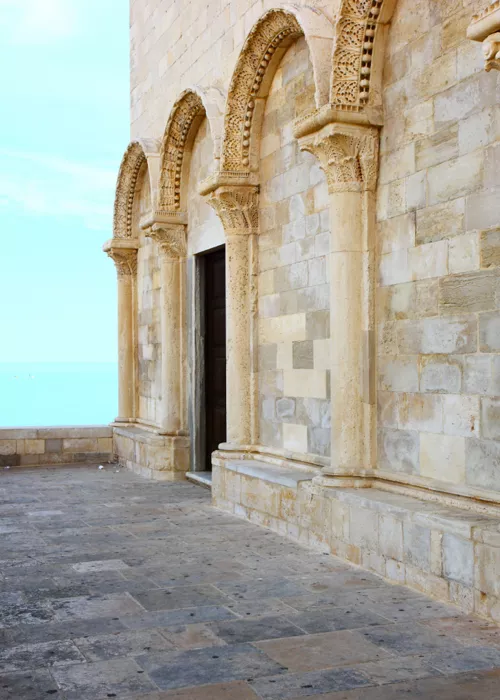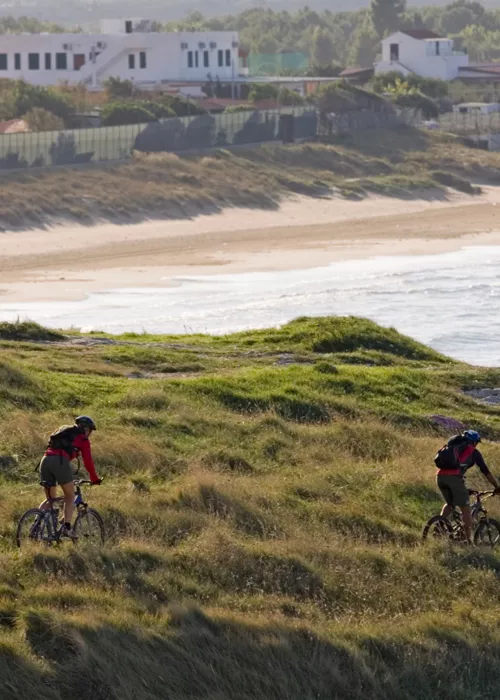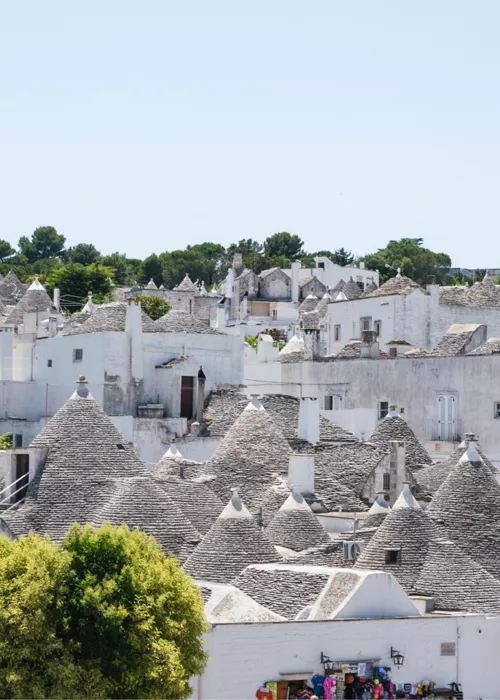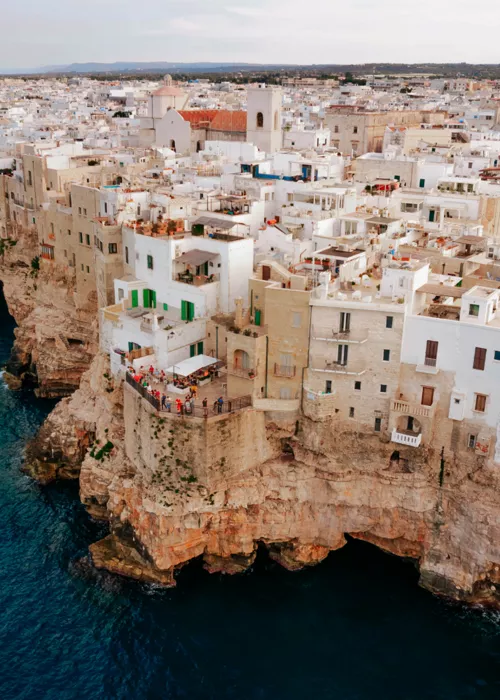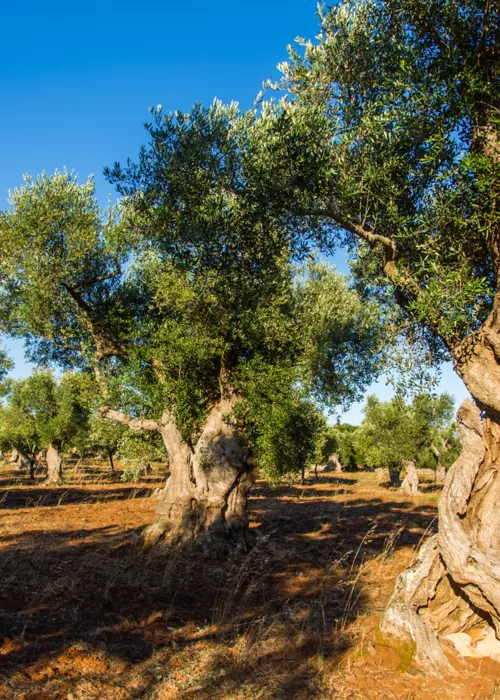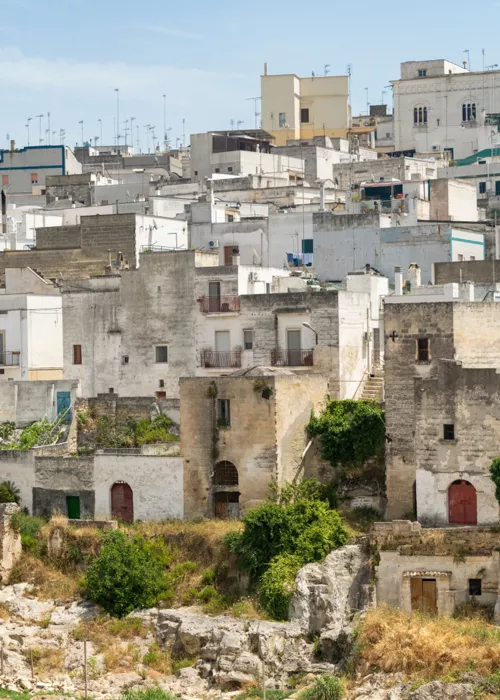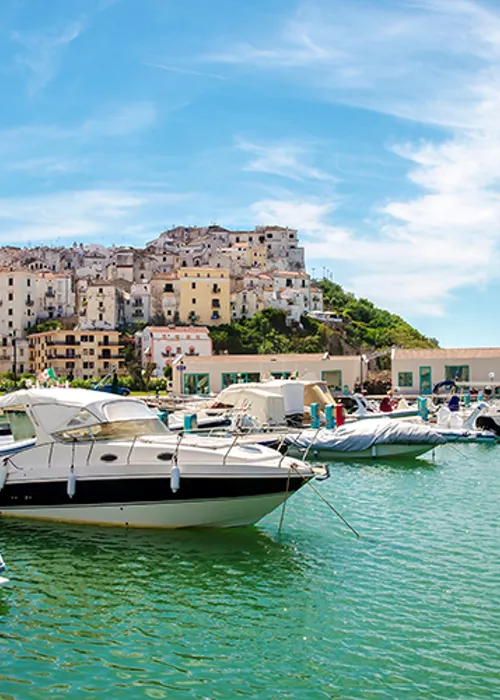Monopoli

In the past, it was a bridge between the West and the East, thanks to its strategic position on the shores of the Adriatic. Cretans, Byzantines, Normans, Spaniards and Venetians competed for control. Its white alleyways and picturesque harbour, winding all the way through the historic centre and equipped with unavoidable defensive fortresses, among which the imposing castle on the headland of Punta Penna stands out. The Cathedral, built in the Middle Ages and rebuilt in the 18th century, is one of the most admirable examples of Baroque in the Land of Bari.
To the west of Monopoli are over 3,600 hectares covered with 184,000 olive trees and, here and there, rural and rock churches, masserie and farmhouses. The masserie are one of the most typical features of Monopoli's rural landscape, bearing witness to the centuries-old relationship between men, agricultural work and production. Among the most representative are Masseria Caramanna of Lombard origin, Spina Grande, dating from the end of the 15th century but entirely rebuilt in 1762, Spina Piccola from the end of the 15th century, Conchia from the end of the 18th century, Masseria Petrarolo with its small church built in 1698 and Masseria Cavallerizza.
Fasano

At the foot of the south-eastern Murge and a short distance from the sea, Fasano has a charming old town made up of narrow streets overlooked by whitewashed houses. Don't miss the 17th-century Mother Church, dedicated to St John, patron of the order of the Knights of Jerusalem, the palace of the Knights of Malta, and the Lama d'Antico rock park.
Around the settlement, expanses of olive trees alternate with various dry-stone constructions such as low walls, bridges, canals, and are dotted with masserie, trulli and casedde.
Compared to the olive-growing areas of Monopoli, Ostuni and Carovigno, that of Fasano is more fragmented, which is why the areas of interest are divided into Monti di Fasano, on the south and south-west sides of the town, and Marina di Fasano. The former intersects the more than 83,000 olive trees - including the most majestic on the plain - with the first trulli of the Itria Valley and white masserie. The second has 90,000 olive trees with a more sparse layout, and is rich in important historical elements, such as the Via Traiana passage, the rock park of Lama d'Antico, the temple of Seppannibile, the crypt of St Procopio and the archaeological park of Egnazia. A landscape made up of wide perspective views and a dense historical road network, with historic nuclei perched around fortified masserie such as the Torre Coccaro, del Brigantino, Sant'Angelo de Graecis and Maccarone.
At the Masseria Mozzone in Montalbano di Fasano, one can admire the "three sisters" olive tree, whose name is due to the shape of this majestic tree made up of a stump measuring a good 16.70 metres in circumference at the base and three trunks grown almost independently but inextricably linked at their base. The olive tree is located at the foot of a small hill, where archaeological excavations uncovered a fortified Bronze Age village.
Ostuni

It is called the White City and the Queen of Olives. The first for the whitewashed houses that dominate the winding streets of the mediaeval old town, the second for the expanses of silver olive trees as far as the eye can see. In the central nucleus, called La Terra, the late 15th-century Cathedral stands out, with a beautiful façade tripartite by pilasters and Gothic forms. The coastal road towards Brindisi is surprising with its long sandy beaches and clear sea.
The olive grove around the town is home to the largest number of monumental olive trees. 6,650 hectares and over 332,000 olive trees.
A real forest dotted with masserie, casedde, trulli located on the dense network of rural roads. And then a hundred hypogean oil mills.
Among the olive trees of Ostuni, one cannot miss the majesty and extraordinary shapes of the Grande Vecchio, at the Masseria Brancati, and theImperatore, kept in the private grounds of the Martucci family;
Carovigno

Heir to the Messapian Karpene and the Roman Carbina (i.e., frugiferous, due to the fertility of its soil), it was protected by three concentric walls surrounding the hill, which is in turn today besieged by the lush green of the countryside. Dentice di Frasso Castle is the most interesting monument in the old town. It appears to date back to Norman times, although its present appearance is the result of transformations and enlargements carried out until the 1900s. The Mother Church), however, was founded in the 14th century; it was given its rose window, made from local stone, in the 16th century and its current appearance in the 19th century. To find the thousand-year-old olive trees around Carovigno, you must head northeast from the town to the part of the region bordering on the coastal wetlands, which stretches from Pantanagianni to the Torre Guaceto Nature Reserve. In all, there are 75,000 olive trees, more than 16,000 of which are listed as monumental.


